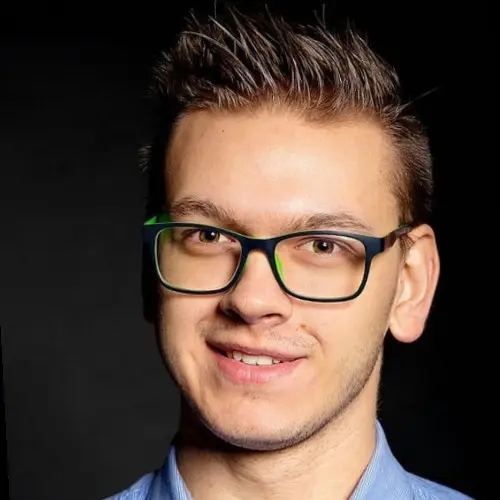Sean Salas, CEO, and Co-founder of Camino Financial, Discusses Scaling an AI-Powered Lending Platform and the Rise of the Solopreneur

Camino Financial is a fintech platform that provides underrepresented businesses in the United States with affordable finance and wealth-building solutions. Camino Financial provides small business owners with access to capital they need to achieve their goals. They aid economic growth in underserved areas of the United States by removing barriers to entry for these small enterprises.
Sean Salas, Camino’s CEO and Co-Founder, is the son of a Mexican entrepreneur who moved to the United States in search of the American dream. His mother, like millions of other immigrants, saw entrepreneurship as the only real means of building generational wealth. Having founded over 30 restaurants in Southern California while raising a family, it was inevitable that his mother’s values of leadership and entrepreneurship were going to be instilled within Sean and his siblings.
Within this article, Sean shares with us: the MVP journey of Camino, what he considers the biggest work-life shift in a generation, outsourcing vs. building a team in-house, and how tech professionals can use their coding superpower for good.
Introduction: Sean Salas, Camino, and their target market
Sean, who moved back to Mexico when he was 12, was always eager to return to the United States and live that immigrant story, telling us how privileged he feels to have had the opportunity to do so. He was determined to succeed, driven by the seemingly limitless prospects that the United States is renowned for, and to make a positive difference in people’s lives.
“Immigrants need a pick-me-up, a support system,” says Sean. “So we established a system tailored for overlooked entrepreneurs, which includes immigrants, minorities, and more. That was truly the passion that founded Camino Financial.”
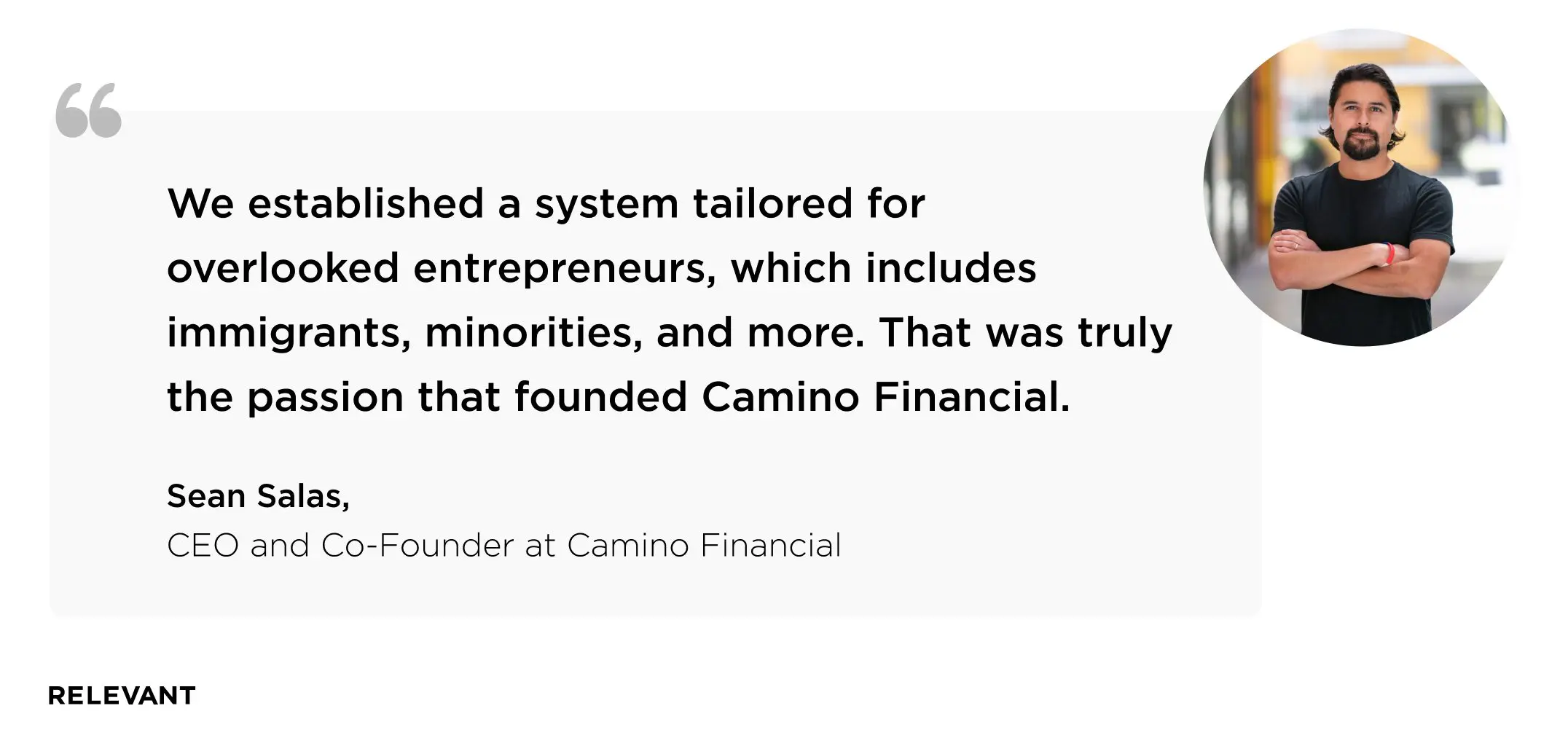
Sean emphasises how Camino is proud of its first wedge product, a working capital loan, which ranges from $1,500 to $75,000 and is offered at a competitive rate, resulting in 40% lower monthly payments when compared to their competitors. What makes them even more distinctive is that for them, it’s not just about providing a low-cost, well-defined product; it’s also about creating a product or credit experience that allows their members to accumulate generational wealth.
MVP: The story of the first MVP and its journey
“We started as a marketplace, with the hopes of receiving funds to lend to underserved companies.”
Camino began by focusing solely on the LatinX market in the United States. Sean emphasises the size of their target market, adding that when discussing the LatinX market, we’re talking about approximately 7 million registered firms and unregistered solopreneurs—all of whom are underserved entrepreneurs who run their businesses entirely on their own. “They’re the fastest-growing segment in the US, bringing in close to $1 trillion into the US economy.”
Sean recognised early on in the Camino Financial adventure that there was a huge demand for capital and a number of barriers preventing access for many., One is the issue of an immigrant’s status in the United States, which poses particularly tough limitations on securing loans for individuals who are undocumented. Another factor is the cash-heavy nature of such solopreneur enterprises, as well as the fact that they are significantly smaller. These all factor into the numerous challenges solopreneurs face when trying to get into the market under reasonable conditions.

“We decided to really narrow our focus. It was 2014 and we didn’t have money to move, but we saw that there was this thing called ‘Fintech’ out there and it was booming. Since 2008 there had been so many online lenders that were emerging, stemming from the Great Recession. By trying to bridge two ecosystems—the underbanked, LatinX, small business segment with the online lenders who serve as a marketplace or a glorified online broker—we saw a product-market fit for Camino.“
“Setting verifiable or falsifiable hypotheses is what an MVP is all about. So the first hypothesis was: are we in a unique position to capture this market at a lesser cost than everyone else? Hypothesis two was: are any of the existing products in the market a good product-to-market fit as measured by the conversion look to book conversion rate? We determined that if we could effectively show this product and see a significant market need, we were on our way to success.”
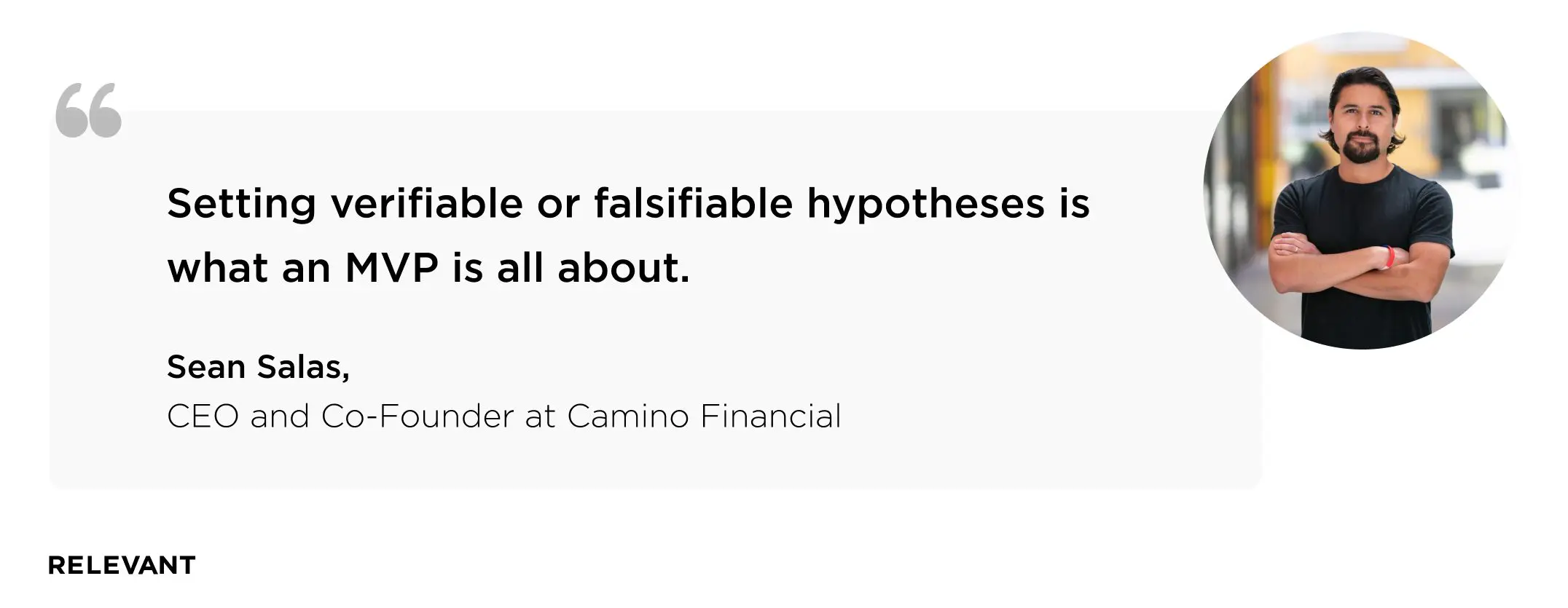
Demand for Camino’s services: The exponential growth of the market and the rise of the Solopreneur
“We’re growing exponentially. We hit the 100 million US dollar mark around last year, and since then deployed close to another 100 million US dollars in loans. We expect to get to a billion US dollars worth of loans by the end of next year.”
Growth: What has led to that exponential growth?
Sean claims that one of the reasons they’re seeing indicators pointing in all the right directions is because they’ve proven to have a best-in-class solution, not only for the LatinX market in the United States but also for other adjacent overlooked markets. Camino’s initial focus was on first-generation Spanish-speaking immigrants and Latino business owners in the United States. They began moving outside of the US Spanish-dominant LatinX sector at the beginning of last year, after realising that they had the potential to scale into new market opportunities.
“We really hit a nerve in the market by the end of Q3 of last year. 80% of our market was Spanish dominant first-generation immigrants around this time last year. Last quarter, 57% of our growth was English dominant speakers, and a third of that was black-owned business owners. So we’ve been able to really demonstrate our ability to translate our market insights into product insights, not just for the LatinX market, but for other overlooked markets.”
Sean has identified a subsegment of the business market known as solopreneurs in the last year, which he says represents the most significant shift in work-life behaviour in a generation. According to him, there are 30 million registered businesses in the United States, but only 25 to 26 million are non-employer businesses. In this subset, the sole employee is the business owner, a solopreneur. Camino was understandably drawn to this market because half of all net growth among solopreneurs is classified as Latino or African American, giving them even more opportunity to increase their reach.
“There are a ton of these freelancers, entrepreneur-minded freelancers, contractors, gig businesses, and individuals, selling their goods and likely don’t have a registered business. But they’re business-oriented entrepreneurs. So if we aggregate these two sub-segments, we’re talking about 60 million solopreneurs in the US, of which 5 million only joined last year. In my opinion, this highlights the largest work-life behaviour shift in a generation. So it’s very important for us to start catering our platforms around this solopreneur segment because that is where our growth is coming from.”
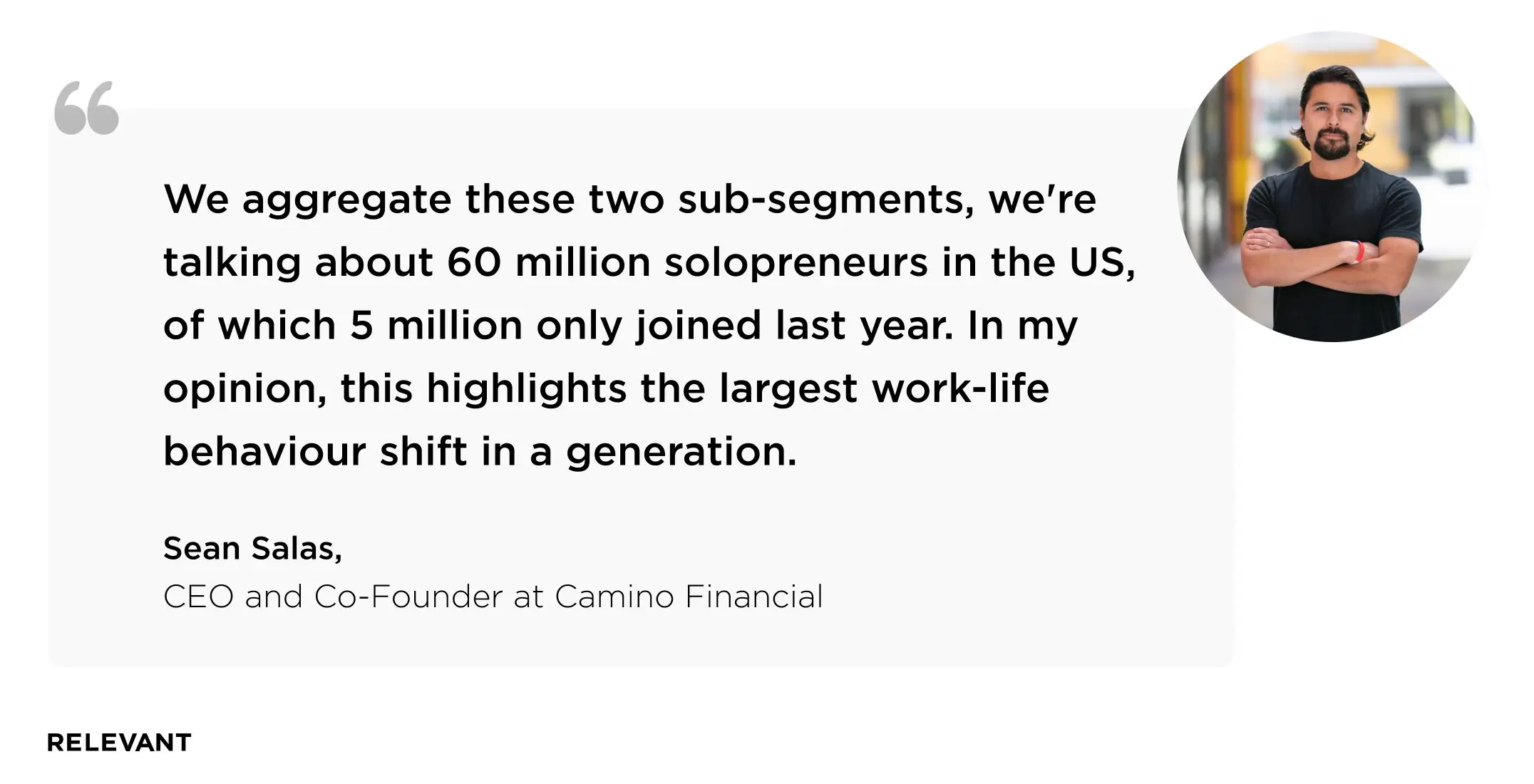
MVP: To outsource or to not outsource?
Sean noted that they first put a lot of emphasis on outsourcing, but they soon felt a need to be more tactical about which components could be outsourced and which needed to be developed in-house.
“We outsource the hardest part. When you’re a marketplace, the good news is you don’t have to provide the capital directly to the borrower. So we were effectively outsourcing the capital piece of the business model. What we weren’t outsourcing was the marketing and branding of that experience or the onboarding of the prospective borrower. We did the best we could with all the front-end work. In the beginning stages, I didn’t have engineers on staff and I set up the website on Wix. I put a glorified form there, which was then emailed to me, and I put everything in an Excel sheet. So it was definitely scrappy but it got the job done.
Sean highlights that as a co-founder, you must be willing to take on any responsibility that arises in the early stages. There’s an understanding that you’ll have to wear a lot of hats and fill all of the roles of a full-fledged team while working with limited resources. Sean explains how he was required to learn how to set up a website, track the conversion of that landing page, and even what a landing page was during the first MVP. It was all completely new to him.
Then, for closing the deals, he relied on the experience of the market’s capital suppliers.
“I learned a lot in the beginning, and we eventually added in the capital piece, which is a really difficult element of the business, especially for this category, when you want to price things significantly lower than existing products on the market.”
Outsourcing development
“While in business school, I found a really good outsourced development reference, a shop in Bayside, India, which was quite helpful in getting the business off the ground. We stayed with them for quite some time.”
“Then you reach the second stage, which is where your MVP comes into play. By this point, I believe that building in-house is definitely more useful and that it would have been more valuable if we had built everything in-house, but we didn’t since we needed to be pretty scrappy.”
“Once we brought in a CTO, I preferred to build most of what we were doing in-house because we wanted to build a very stable environment for development. You have to understand that this is no longer going to be an MVP, this is going to be your solid version, let’s call it your 2.0. If you do too much patchwork on that you’re going to build what’s called tech debt, that can come back to haunt you in a real way. So you need to be very careful about what you outsource at that point in time, to be sure that the foundation is strong.”
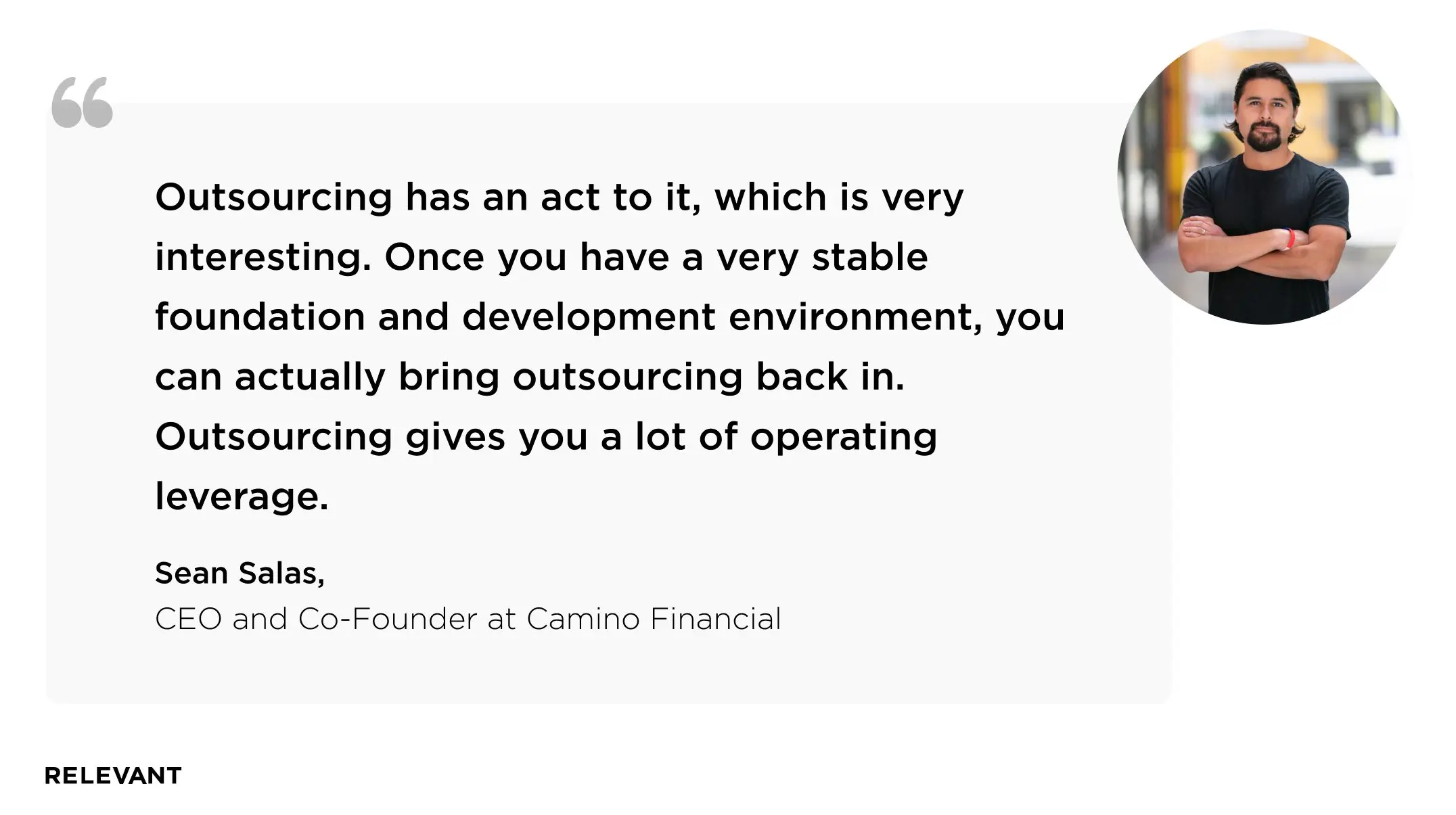
“Outsourcing has an act to it, which is very interesting. Once you have a very stable foundation and development environment, you can actually bring outsourcing back in. Outsourcing gives you a lot of operating leverage, especially for specific projects. At this point, you have a very stable development environment with very clear protocols and technical counterparts at the company level. You can ensure that any outsourced development is being done in a very consistent way that doesn’t create any tech debt. In my mind, outsourcing can be used in different places which can be very effective.”
Expanding the team: When to build internally vs. externally?
Sean refers to the importance of both an internal and external team, emphasising that you must learn to strike a balance at various stages of product development. He claims that as Camino pursues bigger ambitions and plans to grow their workforce, they are opting for a hybrid model, with some work done in-house and some outsourced, especially when a project needs to be developed rapidly.
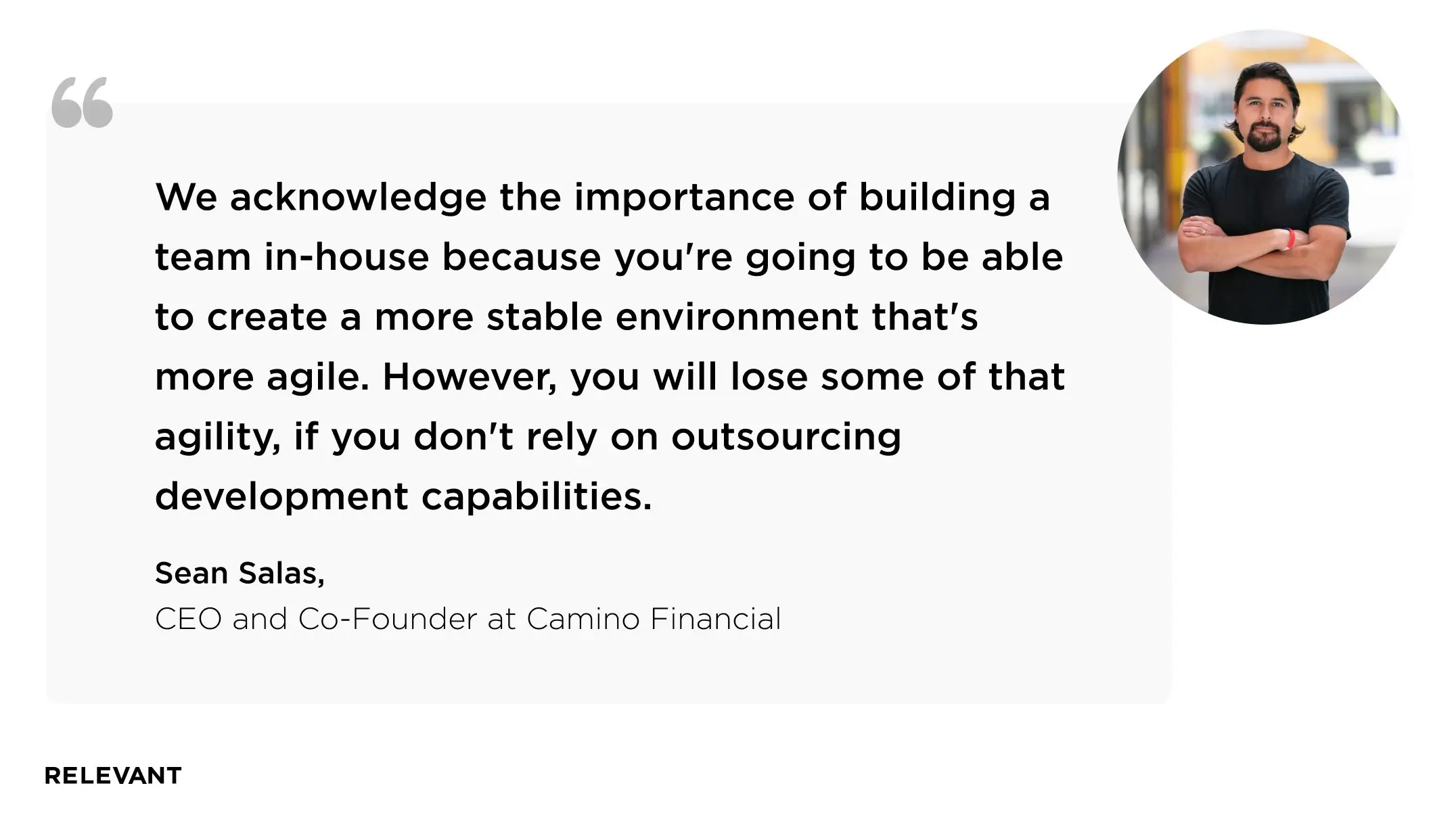
“We spoke a little bit about revisiting India because there are actually a lot of really good data science professionals. We acknowledge the importance of building a team in-house because you’re going to be able to create a more stable environment that’s more agile. However, you will lose some of that agility, if you don’t rely on outsourcing development capabilities, specifically when projects come about quickly Building in-house will be more efficient overall, but we will do so with an eye toward leveraging outsourced opportunities as we enter that next stage of our growth and development.”
Coding is a modern-day superpower: Lead with a mission
Sean believes Camino is made up of a lot of engineers that actually care about the challenges they’re attempting to solve, and as a result, they’re able to use their superpower—coding—for good. He tells us that it’s difficult to find a startup that’s trying to make the world a better place at its core, but that’s exactly what Camino is aiming for.
“We’re not just looking for someone to design another app feature; we’re looking for top technical talent who can help us empower a community.”
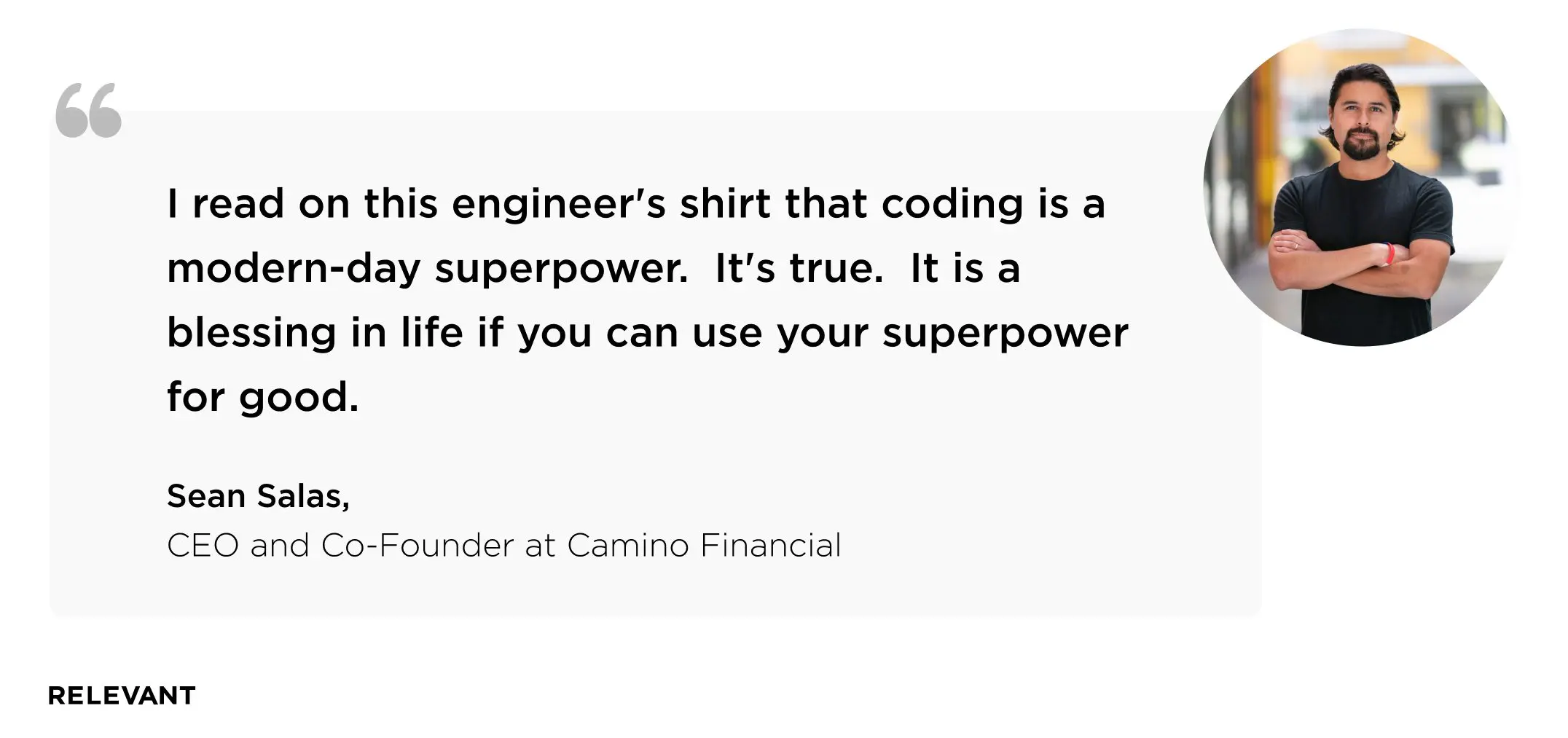
“I read on this engineer’s shirt that coding is a modern-day superpower. It’s true. It is a blessing in life if you can use your superpower for good. There’s been a lot of social distress here in the United States and in particular, around our black and brown communities. I believe that many engineers are looking for ways to make a difference and put their skills to good use.”
A Startup and Work-life balance: Is there such a thing as a work-life balance for an entrepreneur?
“Yes, 100%”
Sean made it abundantly clear in his response to this question that having a work-life balance is essential, and that while it is something he and all entrepreneurs struggle with, especially in the beginning, it is a necessity, especially if you want to retain your employees and provide your clients with the level of service that is expected.
He admitted that his path to appreciating the value of work-life balance was not a straight road. He began his career in investment banking, the infamous industry of 100-hour workweeks. Sean advises all founders to consider ensuring employees use their vacation time.
“For me, at the start of my career, there was no such thing as a weekend. When we started Camino Financial, I do think I brought a little bit of that mentality to the workplace, but I realised very quickly that it’s unsustainable. You need to learn how to shut it off and recharge. Entrepreneurs wear so many hats. And, the opportunity cost of slowing things down is extremely high, so it’s really hard to do that, but you need to.”

“I do think people that are early entrepreneurs need to be more mentally prepared and realise finding that work-life balance is going to be hard. But I’ve also realised that second/third-time founders that start companies, they’re really good at creating that balanced environment. It just comes down to experience.“
